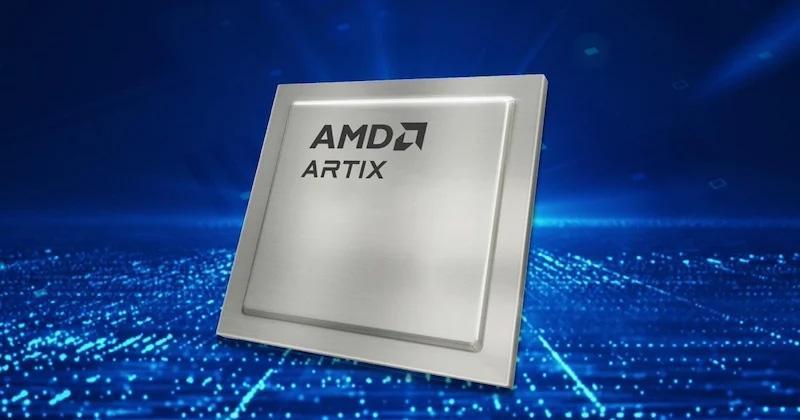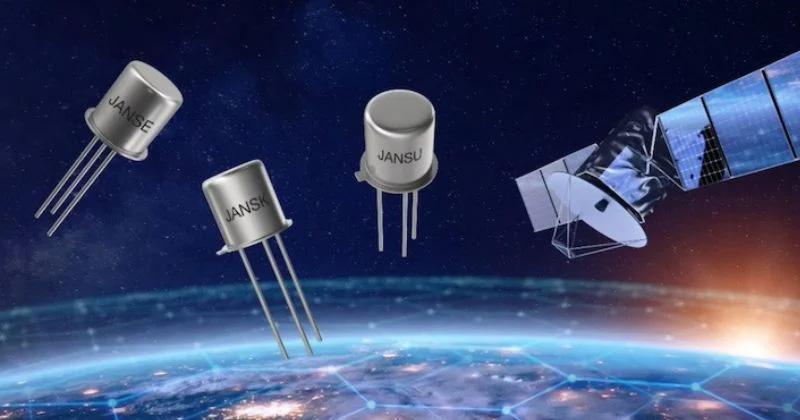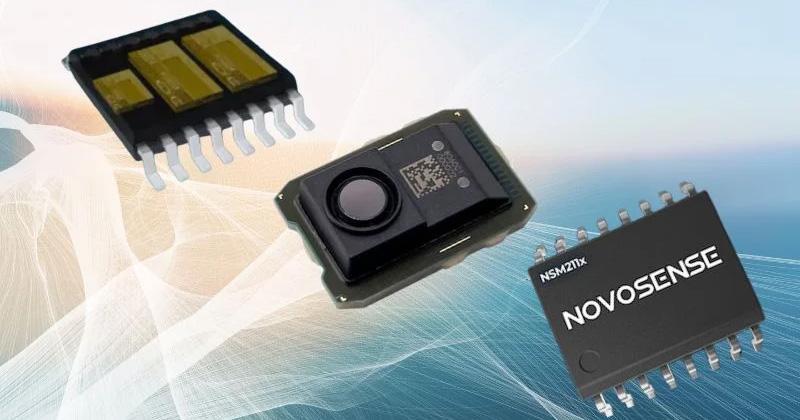
NXP Combines UWB Radar and Secure Ranging in a Single Chip
Today, NXP Semiconductors announced the Trimension SR250, a new ultra-wideband (UWB) single-chip solution that combines on-chip processing with short-range UWB radar and secure ranging.
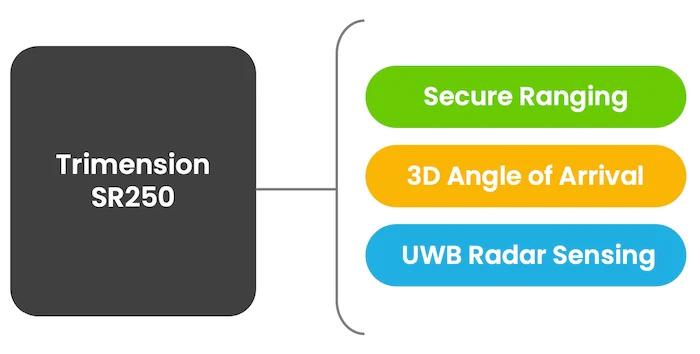
The Trimension SR250 combines secure ranging, UWB radar sensing, and 3D AoA into a single chip.
In recent years, the adoption of ultra-wideband (UWB) technology has rapidly expanded across industries, particularly in sectors focused on automation, security, and efficiency. UWB’s precise ranging and low-power operation have made it a mainstay for applications that require accurate positioning, such as smart homes and industrial IoT. As these sectors evolve, the demand for solutions offering secure communication and high-performance sensing grows.
All About Circuits interviewed Sunil Jogi, NXP Semiconductors' UWB marketing director, to learn how the new chip meets these demands.
Trimension SR250 Covers All Positioning Bases
The Trimension SR250 introduces several useful features for energy-efficient performance in smart home and industrial IoT (IIoT) applications. The most noteworthy aspect of the Trimension SR250 is its on-chip processing capabilities with UWB radar sensing and secure UWB ranging. Traditionally, these functionalities require separate processing units, which increases power consumption and adds design complexity. Integrating these functions into a single chip, the SR250 reduces continuously active application processors, resulting in improved energy efficiency.
The chip operates at UWB frequencies between 6 GHz and 8.5 GHz and can detect presence, location, and motion through radar sensing. Its secure-ranging feature allows it to perform distance measurements with an accuracy of ±5 cm, and its angle-of-arrival (AoA) calculations provide angular measurements with a precision of ±3 degrees.
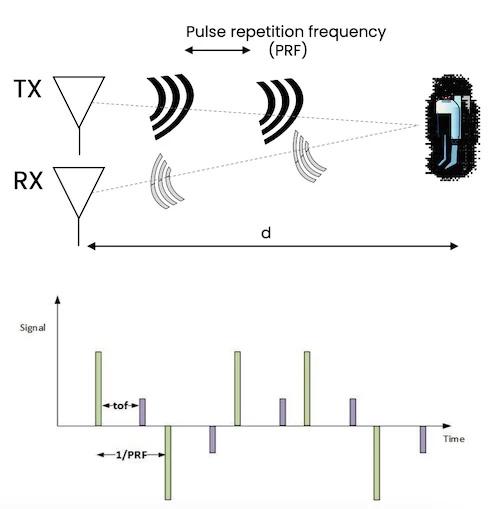
Working principle of pulse Doppler radar.
By handling radar processing on-chip, the SR250 minimizes external processing resources, allowing host processors, such as microcontrollers (MCUs) or applications processors, to remain in deep sleep modes. This drastically lowers overall system energy consumption while maintaining real-time functionality. For instance, in a smart home scenario, the SR250 can remain active to detect human presence, waking up other connected devices such as lights, heating, or entertainment systems only when necessary. This enables a more energy-efficient ecosystem, where the devices intelligently respond to their surroundings without consuming excessive power.
“The SR-250 is the first UWB chip that brings on-chip radar processing, where the presence detection algorithm is implemented in the chip itself,” Jogi said. “There is no post-processing required on the connected application processor, which is definitely helping to save the power for the complete system, not just for the chip.”
Simplifying Development with Middleware and Firmware Support
Recognizing the complexity of radar and UWB technologies, NXP has made the SR250 developer-friendly.
“We provide firmware, middleware, and sample applications, which will save our customers time when designing the product,” Jogi said.
By providing a comprehensive suite of firmware, middleware, and sample applications, OEMs and system integrators can simplify integration and decrease time to market. The firmware includes support for over-the-air updates, ensuring that devices based on the SR250 can stay up to date with the latest security patches and feature enhancements. Meanwhile, the middleware includes a UWB command interface API and APIs for radar operation that support the C programming language.
Smart Home and IIoT Applications
NXP says that the SR250 opens up a new range of possibilities in smart home automation and industrial IoT. It can be used for presence detection and motion tracking in everyday appliances and security systems. With its built-in UWB radar, the SR250 can detect motion as fine as a person’s breathing or other minute gestures. This can be useful in applications like automated lighting, where lights can turn on when a person enters a room and switch off when no movement is detected. Integrated with smart thermostats, for example, the SR250 can also adjust the temperature based on a user’s presence and preferences, creating an intelligent, personalized environment.
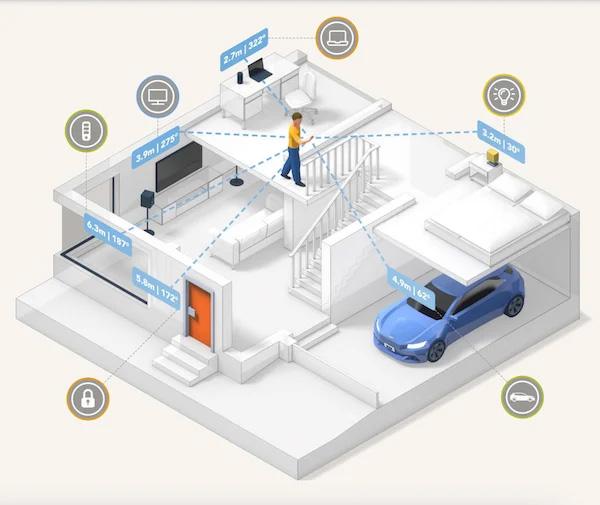
A smart home ecosystem
To support the IIoT, NXP designed the device to interface with external processors, including NXP’s i.MX family of applications processors, RW61x wireless MCUs, and the MCX family of MCUs. By leveraging these processors, the SR250 can use AI and machine learning (ML) algorithms to perform more advanced radar processing and classification tasks.
In a factory setting, the SR250 can track the location of workers, machinery, or materials. When interfaced with an AI/ML-enabled processor, the device can identify and classify objects or people based on radar reflections. This could be used to automate safety features, such as shutting down machinery when a person enters a dangerous area or optimizing workflows by monitoring the movement of equipment. The integration of AI allows the system to perform tasks such as vital monitoring—distinguishing between adults and children or even detecting signs of distress based on movement patterns.
More information can be found in the Trimension SR250 fact sheet. The Trimension SR250 datasheet requires registration for access.
The Role of UWB in a Connected World
As the demand for automation and precision tracking grows, technologies like UWB will continue to reshape how smart homes and industrial environments operate. By making real-time responsiveness both practical and scalable, devices can move toward greater autonomy, unlocking new possibilities for safety, efficiency, and personalization. NXP is currently sampling the Trimension SR250 and expects to make the device generally available in Q4 2024.
“SR250 is the first single-chip solution with a secure-ranging angle of arrival and UWB radar sensing with on-chip processing,” said Jogi. “This enables many new user experiences with autonomous home and industrial IoT with optimized efficiency, improved security, safety, and privacy.”



